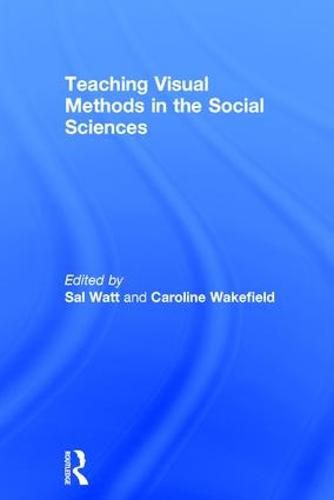Readings Newsletter
Become a Readings Member to make your shopping experience even easier.
Sign in or sign up for free!
You’re not far away from qualifying for FREE standard shipping within Australia
You’ve qualified for FREE standard shipping within Australia
The cart is loading…






Teaching Visual Methods in the Social Sciences presents a practical and theoretical framework for those wanting to introduce visual methods into their curricula. Drawing on the expertise of contributors from across the social sciences, the book provides a comprehensive introduction to visual methodology, learning and teaching theory, and the ethical considerations involved.
Divided into three parts, the book begins with an overview of how visual methods have been used in academic research, and how this can be applied to teaching and pedagogy. It then goes on to introduce different methods, including photography, film and drawing, describing how they can be used in various locations. Finally, the book pulls everything together, advocating the wider use of teaching visual methods in further and higher education curricula across the social science subjects.
The book features a plethora of examples, as well as practical resources for FE and HE teachers, making it an essential companion for anyone interested in utilising visual methods in their teaching.
$9.00 standard shipping within Australia
FREE standard shipping within Australia for orders over $100.00
Express & International shipping calculated at checkout
Teaching Visual Methods in the Social Sciences presents a practical and theoretical framework for those wanting to introduce visual methods into their curricula. Drawing on the expertise of contributors from across the social sciences, the book provides a comprehensive introduction to visual methodology, learning and teaching theory, and the ethical considerations involved.
Divided into three parts, the book begins with an overview of how visual methods have been used in academic research, and how this can be applied to teaching and pedagogy. It then goes on to introduce different methods, including photography, film and drawing, describing how they can be used in various locations. Finally, the book pulls everything together, advocating the wider use of teaching visual methods in further and higher education curricula across the social science subjects.
The book features a plethora of examples, as well as practical resources for FE and HE teachers, making it an essential companion for anyone interested in utilising visual methods in their teaching.